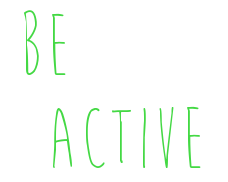What to take to an academic conference? A checklist
An academic conference is a meeting where researchers can present their findings and discuss them with their peers. They may come in the form of small, local meetings, as well as global events. Some academic conferences focus on a single discipline, while others are interdisciplinary and bring various perspectives.
Who organizes academic conferences?
Academic conferences are usually organized by universities, research centers, scientific societies, and groups of researchers with shared interests. Sometimes events like these are also organized by think-tanks and large corporations.
The course of an academic conference
Every academic conference has a program which is filled with short presentations on different topics. They are usually arranged into parallel sessions that take place at the same time – keynote sessions, panel sessions, oral sessions, poster sessions, and workshops.
Keynote sessions
Keynote sessions set the tone for the whole academic conference. They involve established researchers and are the headliners of the whole event.
Panel sessions
Panel sessions allow exchange of viewpoints among various experts on a given topic. They usually involve multiple researchers who discuss and hold a debate on a previously chosen subject.
Oral sessions
Oral sessions are sessions where multiple presenters give lectures on separate papers that share common themes or topics. Each presentation usually takes around 10-15 minutes with some added time for questions from the audience.
Poster sessions
Poster sessions create an opportunity for the conference participants to work together. They typically involve creating a poster which is later presented in the halls of the conference venue. Poster sessions are an invitation to discussion and a way to widen the horizons of the participants.
Workshops
Workshops are usually aimed at researchers who are at the beginning of their career. They convey information and advice, such as how to get published in a top academic journal.
What to take to an academic conference?
The items every person should take to an academic conference are: presentation materials, a notebook and a pen, a laptop, business cards, and a clipboard.
Presentation materials
Preparing clear, legible, and engaging presentation materials is a way to make the lecture more engaging to the audience. As a result, communicating the ideas to the listeners is way more effective.
Notebook and pen
A notebook and a pen come in handy when a participant of a conference wants to take notes during presentations and discussions. They allow writing down important points and details, questions, own thoughts on the subject, ideas, and lists of follow-up actions. Both notebooks and pens are often provided by the conference organizers, it is, however, best to come prepared, just in case.
Laptop
A laptop is an important tool during a conference. It can be used to write notes that are easier to edit and copy than manually written annotations. It also allows access to the conference materials, such as presentations and handouts, that are only available online. Having a laptop at a conference helps stay organized, productive, and connected, since it facilitates communication with other participants, as well as people at home.
Business cards
Business cards are a must-have on the academic conference. They allow a quick exchange of contact information and can be used to create a good impression. Giving business cards is the best way to introduce yourself and your company in a professional way. It is also an effective tool to establish credibility.
Clipboard
Conference participants should also equip themselves with clipboards. They provide a rigid base for writing on the go and can hold the notes during presentation, making the speaker appear more professional. The best impression can be made with the use of custom clipboards. They come in different dimensions and different shapes – they may be single or in the form of a folder. Custom clipboards can also be decorated with colorful prints, logos, and other elements.


